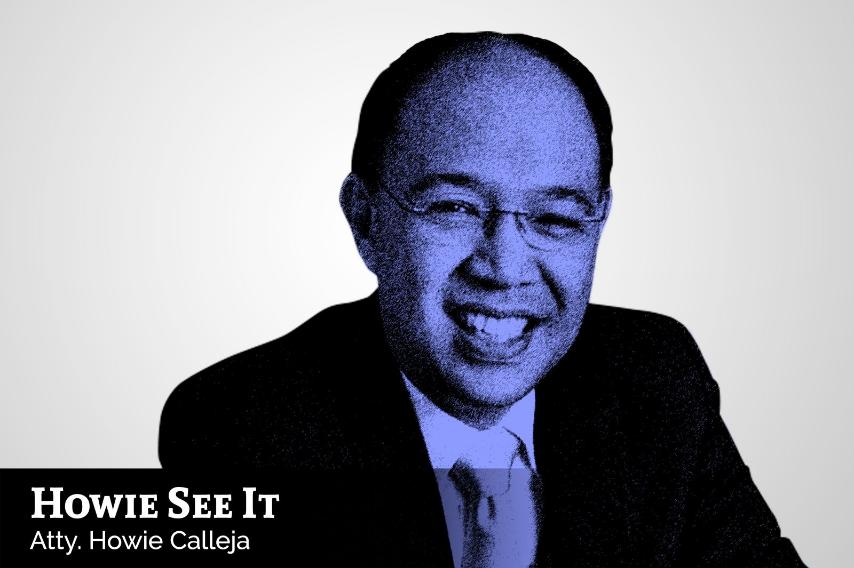By Atty. Howie Calleja
Just less than a week before Christmas, video footage of a shooting incident in Paniqui, Tarlac committed by a policeman against a mother and her son, sparked outrage across the nation. On December 20 2020, Policeman Senior MSgt. Jonel Nuezca, a police officer who was previously charged with homicide and multiple administrative cases, fatally shot his two neighbors, Sonya Gregorio and her son, Frank Anthony. In the video, it is seen how Nuezca, who was “off duty” at the time of the incident, tried to arrest Frank, with his mother Sonya protecting and trying to prevent her son from getting into an altercation with Nuezca. This escalated into an argument between the three. Despite the pleas from people who were begging and crying, Nuezca mercilessly shot Sonya in the head, then Frank twice. Nuezca’s daughter is also captured in the video, shouting “my father is a policeman”. Double murder charges were filed against Nuezca in a court in Tarlac, with no bail recommended.
In an Inquirer article dated on December 22 2020, Chief of Police Debold Sinas stated that the video of Tarlac murders are strong as evidence, but that the 16 year old girl who captured the same must be put on the witness stand and testify in order to make the case stronger. However, this view is erroneous and Sinas should brush up on his basic knowledge of the law. It is worth stressing that the case for the prosecution is not contingent on, and cannot be dependent on the presentation of the 16 year old girl as a witness. It is one way to authenticate the video footage, however, it is not the only one. Rule 11, Section 1 of the Rules on Electronic Evidence provides that audio, photographic, and video evidence shall be admissible, provided it shall be shown, presented, or displayed to the court, and shall be identified, explained, or authenticated by the person who made the recording, or some other person competent to testify on the accuracy thereof. The case of Sison vs. People provides that the admissibility of this kind of photographic evidence is dependent on how accurately it depicts the scene of the crime, and that the person who captured the photo or video is not the only person who can identify the shots taken. Photographs and videos can be identified by the photographer, or by any competent witness who can testify to its exactness and accuracy, as well as the circumstances under which they were produced. Although the video evidence is strong, there are also other evidence that can be presented to support the case for the prosecution. The people who saw the altercation can also be presented as witnesses who can testify that they personally saw the events depicted in the footage with their own eyes, and while it was taking place. They can also execute judicial affidavits and submit the same. More importantly, basic procedural rules would tell us that this is not the proper time to offer the evidence, as marking, offering, and presentation of evidence are three very distinct processes.
The Tarlac shooting incident is one of the many incidents of police brutality committed in the Philippines. It is only fortunate that this incident was recorded, so that the perpetrator of this heinous crime be tried, sentenced, and held responsible for his actions, and for justice to the victims be served. However, this begs the question – how many more incidents like these happen, but go unrecorded and unreported? Aside from Sonya and Frank, who else have been victimized by this cycle of state-sanctioned violence committed by police officers, who, ironically, are tasked to protect the nation’s citizens?
To show what kind of policeman he is, Nuezca’s record speaks for itself. He has had at least two homicide charges filed against him, which were both dismissed for lack of substantial evidence, as well as several administrative complaints, particularly for grave misconduct, serious neglect of duty, and less grave neglect of duty. The most grave punishment meted out to him was a 31 day suspension, which is a slap on the wrist. Had the PNP exercised due diligence, and had it been thorough with its investigation, Nuezca would have been dismissed from the service years ago, and Sonya and Frank would still be alive. While the criminal cases against him were both dismissed, the quantum of evidence required for the administrative case is still lower, and such would have been enough to find Nuezca administratively liable, which would have been sufficient to warrant his permanent dismissal from the service.
It is the primary responsibility of the Philippine National Police (PNP), the body tasked with law enforcement, to make certain that all its members live up to the standards imposed on them. However, when the members of the PNP and their leaders are the ones who condone, and even go so far as to perpetuate this state-sanctioned use of brute force against defenseless civilians, it breeds a harmful culture of impunity. When these acts are tolerated and continue to go unpunished, it only emboldens erring policemen to continue as the current status quo allows them to be able to get away with it. An example of this is the case of Debold Sinas, who was notorious for breaking quarantine rules with his mananita and mass gathering despite the prohibition on such, was promoted by no less than the President to become the Chief of Police.
The acting Chief of Police of Paniqui Municipal Police Station, seemingly siding with Nuezca, even commented on his behalf saying that Nuezca feels very remorseful and claims that he blacked out when an argument ensued between his daughter and Sonya. If this was not bad enough, the President described Nuezca as “may sakit ito sa utak,” implying that Nuezca was insane when he committed such gruesome acts. Both the acting Chief of Police of Paniqui Municipal Police Station and even the President, are either speaking for and on behalf of Nuezca or building up his defense. As officials whose departments play a big role in the investigation, prosecution, and protection of witnesses, it would be wise if they kept their opinions to themselves and refrain from justifying the acts of Nuezca, lest they be viewed as spokesperson for the accused, which in turn is tantamount to victim-blaming.
This sentiment is also reflected in PNP Chief Debold’s statement discouraging the taking of pictures and videos during crime incidents, even describing it as tricky because it can put them in danger. Rather than making excuses for the criminal’s actions, and preventing full prosecution for said crimes, Sinas should be and is expected to be the first to call for the investigation of the heinous acts done by his subordinates. This comment shows how ludicrous the policemen’s way of thinking has become. To say that taking video footage of crime scenes, and requiring the testimony of the 16-year-old girl who took the video not only manifests the ignorance of the law of the police but also their tendency to come to the rescue of their fellow man in uniform instead of using the full force of the law. If the PNP continues to make these kinds of statements, and make excuses for criminal acts committed by their colleagues, undoubtedly these senseless killings will happen again. No wonder there was not enough evidence to remove Nuezca from his post despite multiple administrative and criminal cases, because those who were supposed to call for his removal turned a blind eye to it. The case for Sonya and Frank is far from weak – in fact, it is Sinas’ redirect for the rule of law, underfunding of the law, and even knowledge of the law that is weak. If Sinas, the highest-ranking policeman in the PNP, does not know the procedure of properly introducing and authenticating video evidence, and limiting his options to only the minor and the video, perhaps he should attend a refresher course of the law and its processes. Because of his poor and limited understanding of the law, it will be unsurprising if many crimes go unpunished.
This is not a broad generalization that all cops are bad. In fact, there are genuinely good, trustworthy, and honest men and women in uniform, just like there are also bad people who can be on either side of the equation.
However, when you have a Chief of Police who does not care about government imposed quarantine rules and regulations and deliberately violates the same, coupled with cops convicted of killing innocent civilians like Kian delos Santos, Carl Arnaiz, and Reynaldo de Guzman; and a senior police officer with two previously dismissed cases of homicide and now facing a double murder, what does this give us? Bad policemen and an administration that condones extrajudicial killings – a recipe for disaster.
I think I speak for all the people when I demand justice for Sonya and Frank, full accountability of Nuezca, and for the application of the rule of law to its fullest extent, rather than the law of men which has been plaguing our society. As of the time of this writing, there is another reported incident of murder committed by the members of the police force. It is imperative that policemen stop blaming the victims of this state-sanctioned violence, and the use of brute force when there is no justification is one of the problems that should be addressed. Clearly, there is a need for reform with the police system, and there is an urgent need to start working towards giving the victims the justice they rightfully deserve. When police blame the victims of the unjust system, such only encourages and perpetuates this culture of impunity, and it is high time that an end be put to this.














